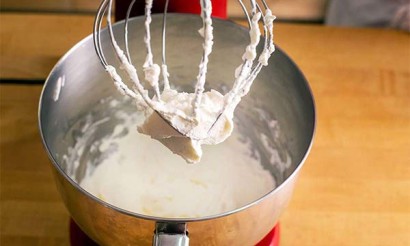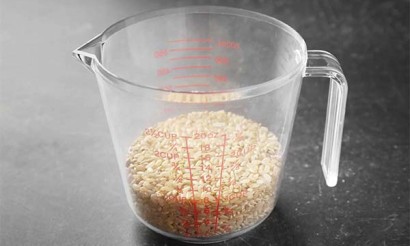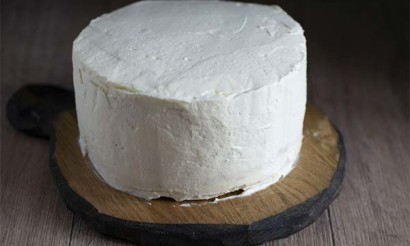How to peel potatoes fast: 5 ways
In Russian cuisine, potatoes are an indispensable ingredient in cooking. It is added to both first and second courses, as well as in salads. In some cases, peeling the tubers can become a real grueling ordeal. This article will give advice on choosing a knife, as well as ways to peel potatoes without one.
Choosing a knife for peeling potatoes
In most cases, the peeling of potatoes is done with a knife, so every cook or homemaker must necessarily have a handy tool for peeling vegetables. The knife should be light, safe, comfortable and reliable.
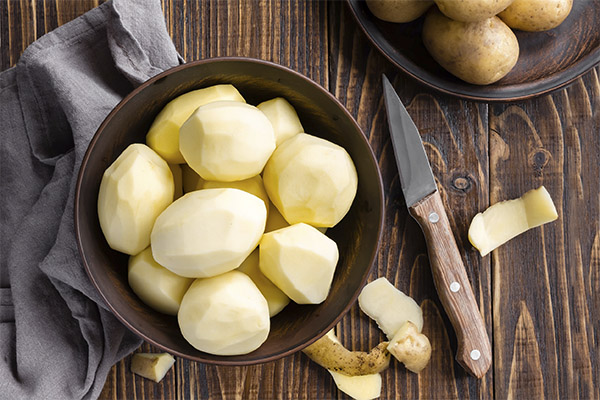
If peeling potatoes does not take much time when cooking, there is no need to buy special knives. However, if we are talking about a regular activity, it is worth paying attention to more convenient models. Let's consider the most popular of them.
Piller knife
Piller knife is a universal tool in the kitchen, because thanks to it you can clean most vegetables and fruits. In addition, the model is attractive because it is as safe as possible, including for children. Cleaning with such a tool speeds up the process as much as possible. The hostess may have difficulty peeling the vegetable if the potatoes are not flat enough.
There are two types of peelers on the market: a slingshot and a straight knife. Outwardly, a slingshot peeler resembles a razor blade with a shortened handle and a handy blade. The peeling blades are angled to minimize waste when peeling potatoes.
Straight models have an extended handle. A distinctive feature of the tool is the extended blade, which helps to peel potato eyes. The two blades of the tool are angled to each other.
Knife with floating blade
Since appearing on the market, knives with a floating blade have become the most in demand, as this part ensures the safe cleaning of any vegetable, regardless of shape. Almost every model uses a blade with a 360-degree rotation angle, greatly speeding up the process of peeling vegetables and fruits. Knives of this type have two types of blades: with and without serrations. The second type of the presented knives is more convenient for peeling potatoes.
Curved knife
The distinctive feature of this type of tool is a shortened but curved blade. Thanks to this, potato peeling is fast, without significant waste. The tool holds well in the hand, providing maximum comfort when it comes to long peeling of the vegetable. The blade is wide, allowing you to peel potatoes in a few hand movements. The sharpened end helps remove eyelets and other tuber growths. Still, there is a significant drawback - you need to handle the tool carefully to protect yourself from accidental wounds.
How to peel potatoes
The easiest way to peel raw potatoes is to use a kitchen knife, but the whole process should be performed in compliance with certain rules. It is advisable to peel potatoes under running water, using a small kitchen knife.

Raw
First remove all unnecessary elements from the potatoes, including dirt and sand. Then start peeling the tubers with light strokes. Rinse the peeled potatoes under running water and remove any remaining peels, eyes and dark spots.
Young
To clean young potatoes, we recommend using a metal sponge that is designed for dishwashing. For safety and health reasons, we recommend using a new sponge without defects or rust.
Cleaning algorithm:
- Wash the tubers;
- rub each potato with a metal brush;
- Remove the eyelets with a knife.
After cleaning, rinse the potatoes again under running water and, if necessary, remove any remaining skin.
Small
To prevent peeling small potatoes from turning into torture, we recommend using salt. To do this, take a small potato, wash it, put it in a bag and fill it with salt. Then proceed to peel and rub the tubers well with salt. At the end of the process, take the vegetable out of the bag and rinse under running water, removing the remaining peel. Using this method ensures that small potatoes are peeled with minimal assistance from the housewife.
In the jacket
Boiled potatoes are often used in the preparation of various dishes and salads. Such a vegetable needs to be peeled after boiling. There are a few clever ways to speed up the process.
After boiling the potatoes, take them out of the hot water, put them on a flat plate or on a kitchen board. It is most convenient to take out the hot tubers with a fork. Hold the root vegetable with a fork with one hand, and with the other, using a knife, peel it from the skin. This technique is the most common among housewives, allowing you to minimize the loss of edible mass.
The second method involves treating the potatoes after boiling with temperature treatment. After cooking, drain the hot water from the pot, and pour cold water, adding ice to the potatoes. Keep the root vegetable in the ice water for a few minutes. As a result, the potato peel itself will begin to come off the fruit, without much effort on the part of the housewife. A similar technique can also be resorted to when peeling young root crops.
The third method of peeling involves the initial preparation of the vegetable for subsequent peeling. First wash the tubers before cooking. Before you start cooking, make a circular incision all around the perimeter of the root vegetable, with the incision should coincide on all sides. Then proceed to boil the potatoes. Before pulling out the root vegetable, prepare a basin of cold water. Place the boiled potatoes in the cold water for 10-15 seconds. After removing it, allow time for it to cool. Then take the root vegetable with your hands from different ends and press on it, the peel will be easily removed without any additional effort.
The above techniques have proven themselves in practice. They greatly speed up the peeling of boiled potatoes.
Without the knife
The peeling of raw potatoes is sometimes possible without a knife. You can make use of improvised tools like a sieve. This is a good method for peeling new potatoes. First, choose a sieve with fine mesh. Then fill the root crop in the sieve and under a stream of water, roll the root crop several times. Finally, remove the eyes and rinse the root vegetable thoroughly before cooking.
How to store peeled potatoes
Storing peeled potatoes comes with challenges. The root vegetable becomes covered with black spots in a short time. There are several methods recommended for long-term storage.
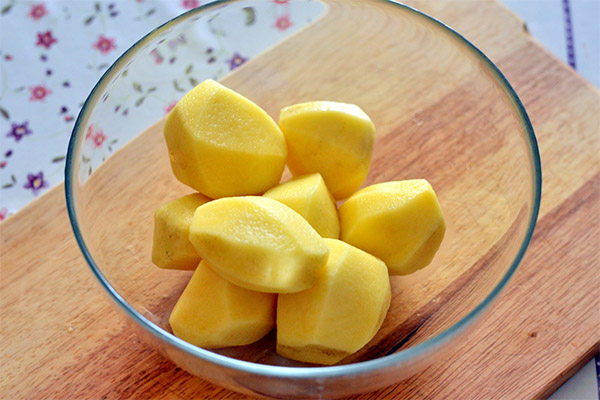
- A common method is to store the root vegetable in cold water. However, do not forget that storage in this form will lead to the dissolution of vitamins and useful substances in the composition. To slow down this process, store potatoes in whole tubers.
- It is worth noting that the storage time of potatoes without loss of useful substances is no more than 3-4 hours. Premature blackening of fruits is due to the active use of nitrogen during cultivation. To slow the process, add a slice of lemon to the pot along with the potatoes.
- Soaking in cold water and in the refrigerator is recommended for longer storage. After peeling the potatoes, place them in cold water. Soaking in ice water slows down the blackening of the product.
- Rinse the root vegetable again with water before you start cooking. However, this technique is not suitable when it comes to cooking boiled potatoes, as long storage in water reduces the density of the vegetable crop.
- To preserve the density of tubers, you need to put peeled potatoes in a bag and put them in the freezer. The bag should be tied to prevent air from entering. Otherwise, the method will not have the expected success. There is no need to defrost the potatoes before cooking, you can immediately lower the root vegetable in salted, boiling water.
- To preserve sliced potatoes for a long time, you will need food film. First, wash the peeled tubers, removing the released starch. Wipe the washed root vegetable with a towel, then proceed to cut the potatoes. After that, wrap the sliced root vegetable in clingfilm and place it in the freezer. Cut potatoes can only be stored in the freezer.
It is not necessary to defrost the vegetable before cooking. If you want to cook fried potatoes, place the slices on a heated frying pan, pre-greased with sunflower oil. If the sliced potatoes are intended to be boiled, in which case drop them into boiling salted water.
«Important: All information on this site is provided for informational purposes only. for informational purposes only. Please consult with your health care professional before using any of the recommendations. specialist before using any of the recommendations. Neither the editors nor the authors shall be liable for any possible harm caused by materials."


